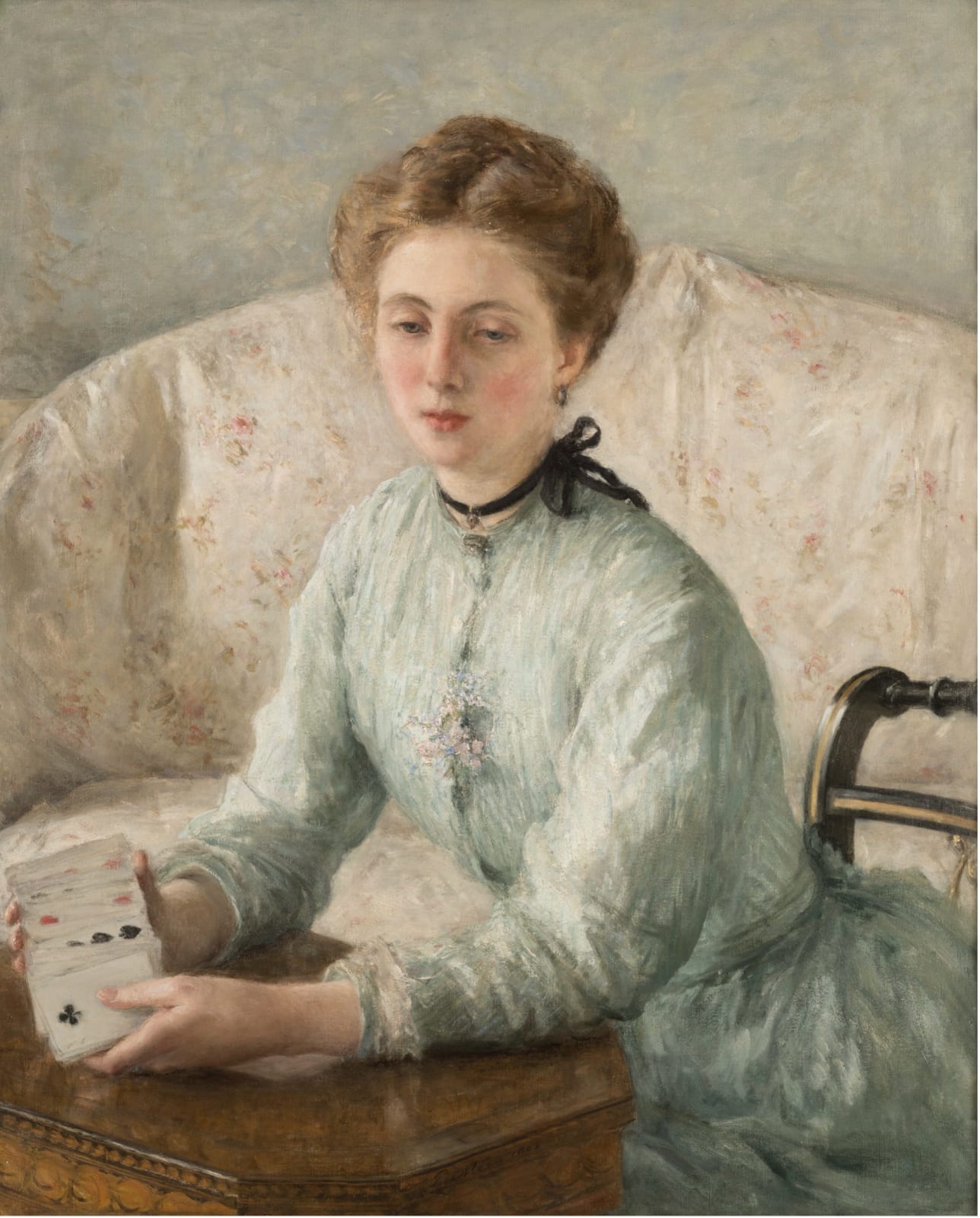Philip Wilson Steer 1860-1942
Framed: 100 x 87.5 cm.; 39¼ x 34½ in.
In the forge of British Impressionism’s development, Philip Wilson Steer’s A Turn of the Cards is an exquisite example that goes beyond simple portraiture. Painted in 1903, the artist’s progression from radical experimentalist to a skilled interpreter of domestic psychology demonstrates how Continental techniques could be adapted through British sensibilities.
The composition centres on a young woman, likely Theodora or Helen Bennett, a frequent subject during this period, absorbed in deep thought as she shuffles playing cards delicately held in her hands. This depiction of the sitter’s introspection adds a layer of psychological depth that is both captivating and thought-provoking. The cards themselves serve as narrative focal points, drawing attention to hesitant hands that suggest both chance and deliberation, a metaphor for life’s uncertainties that elevates this domestic scene beyond mere documentation.
Steer positions his restrained subject within a floral-upholstered armchair, its pale pink and white chintz creating luminous contrast against her sea- green dress, demonstrative of Steer’s refined colourist sensibilities. The garment’s lustrous surface, created through distinctive broken brushstrokes, shows the artist’s ongoing adherence to Impressionist techniques while revealing greater sophistication in capturing the interaction of light with fabric.
Compositionally, Steer employs geometric precision that is concealed by an apparent spontaneity. The echoing colour of the sitter’s hair, the table and chair, and the sitter’s triangular silhouette anchors the pictorial space, whilst the dark wooden table introduces horizontal stability.
The work occupies a unique position between Victorian academic tradition and modernist innovation. Unlike contemporaries who embraced either conservative approaches or radical Continental developments, Steer forged a distinctive synthesis that honoured both influences while maintaining an individual voice. His ability to capture psychological interiority through material observation aligns him
with Vermeer’s legacy, whilst his Impressionist technique places him within contemporary discourse. Tradition and innovation singularly blend in Steer’s work.
Through deft technique combined with deep psychological insight, he crafted not just a portrait but a reflection on solitude, contemplation, and the quiet moments that shape the human experience.
Provenance
Edgar Hesselein, acquired from the New English Art Club, 1903
Sotheby's, 20 June 1962, lot 36 (sale of the collection of the late Mrs. Emily Hesselein of New York City)
The Fine Art Society, London
R.F. Glazebrook, Brynbella
Sotheby's, London, 2 June 1994, lot 361
Sotheby’s, London, 27 November 1996, lot 18
Private Collection (purchased from the above)
Exhibitions
New English Art Club, 1903
Bradford, Cartwright Hall, 1904
Brooklyn Institute of Arts and Sciences, Loan Exhibition, 1922
Literature
D.S. MacColl, The Life, Work and Setting of Philip Wilson Steer, Faber & Faber, London, 1946, p. 205.
Bruce Laughton, Philip Wilson Steer, Clarendon Press, Oxford, 1971, pp. 75-76, 142, no. 315, (illustrated pl. 135)




